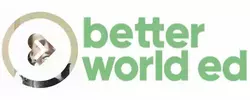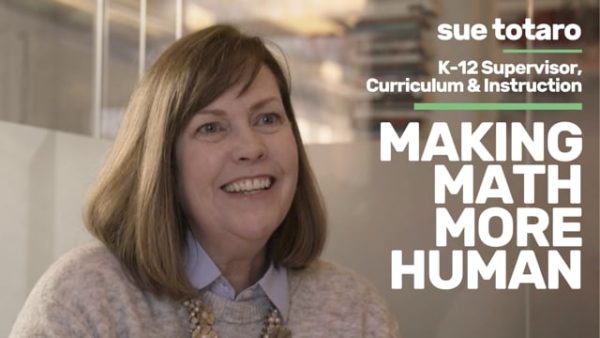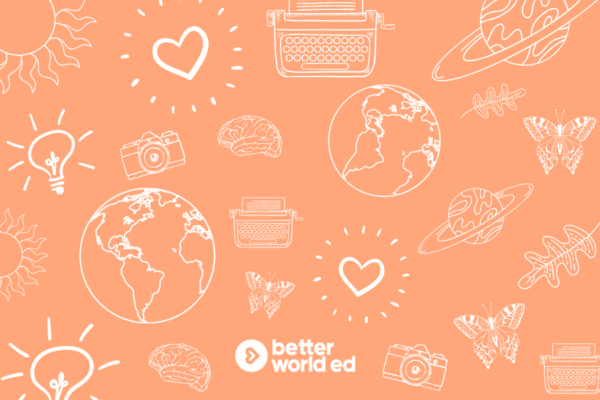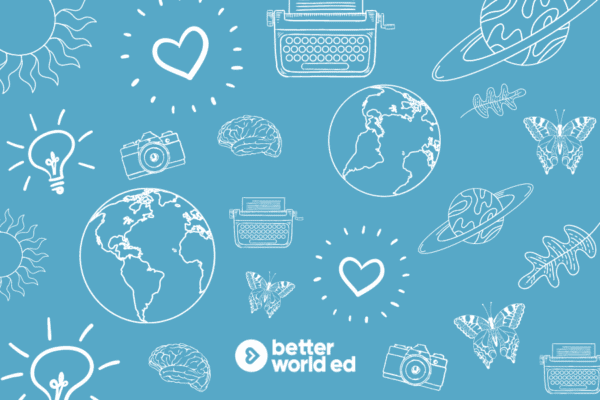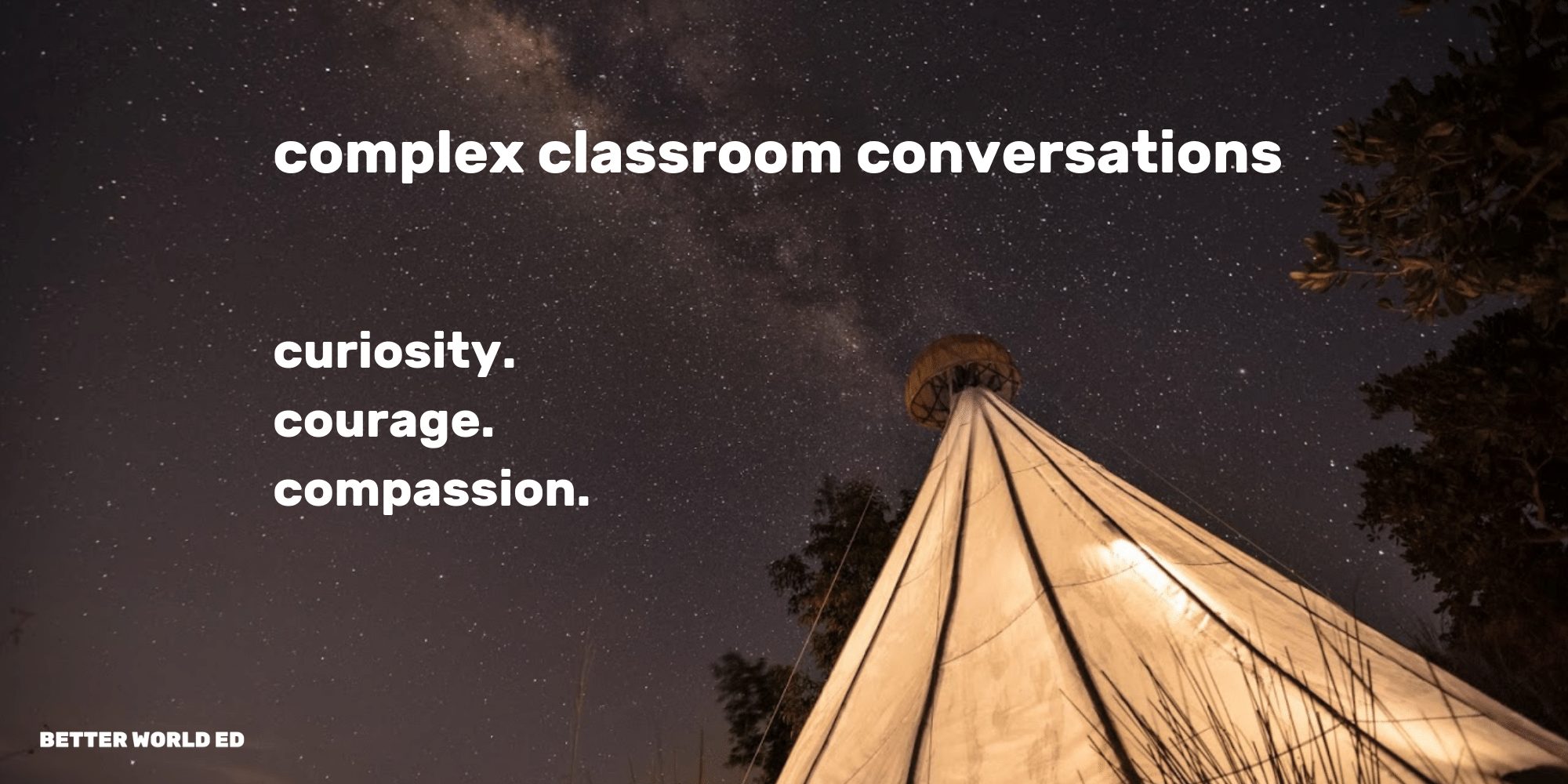
Having Complex Classroom Conversations with Curiosity, Courage, and Compassion
This classroom conversations resource consists of a short article and many powerful resources focused on equity, peace, and justice to help teachers, students, parents, and all of us heartstorm about some big questions during our complex classroom conversations. Let’s breathe LIFE into learning during classroom conversations — with courage, compassion, and understanding.
How might we engage with our students and colleagues about complex topics — all while creating a mindful, inclusive, compassionate, and connected classroom space?
How might we become more aware of our biases and judgments in a meaningful, proactive, and collaborative way? How might we avoid the dangers of portraying a single story about a person, culture, community, or country in these complex conversations? How might we prevent presenting ourselves as an expert who knows all, and instead be humble learners alongside students and peers?
And how does all of this deeply interconnect with our daily lives way beyond our classroom conversations?
Click the “Articles” and “Resources” buttons above to dive in to some important classroom conversations!
Related Resources for other classroom conversation sparks!:
Lesson plan on bridging the empathy gap
Categories
Articles, BeWE Learning Journey, Pillar Piece, Teaching Resources
Tags
Approaches, Compassion, complex conversations, courage, Courageous Conversations, curiosity, Deficit View, Equity, Peace, Race, Teaching, Teaching & Learning, Whitewashed SEL
Lead Author(s)
Browse Related Articles and Resources
Having Complex Classroom Conversations with Curiosity, Courage, and Compassion
A student starts a classroom conversation that you’re not sure how to talk about meaningfully. You’re teaching a lesson this week that could spark a complex conversation. You’re hearing students bring up complex feelings they have, and you’re not sure how to talk about this with the care you intend.
You’re talking about a global issue in class tomorrow that might not feel so relatable to you and/or your students. You’re introducing a new culture or way of life and want to do it in a mindful way. You’ve got biases you’re aware of (or aren’t yet aware of), and you are looking for ways to explore and move beyond them meaningfully and with courage.
Teaching is complex. Being a student is complex. Being a human is complex. This space exists to make all of this complexity a little less scary, and to help us remember something big: hidden within the complexity is beautiful, deeply impactful learning. We are creating this classroom conversation space to remind us that we’re all on this learning journey together, that we’re not on our own, and that courage + curiosity + compassion can help us every step of the way.
That moment when your student asks a big, hard, nuanced question about themselves, someone else, or a big important topic like inequity or wants to talk about race? Let’s explore how we might make those moments less “ahhh, what to do!?” for all of us.
Let’s explore how to encourage those moments more in our classroom conversations and our lives, rather than hiding from them consciously or subconsciously. Together, let’s learn to see the magical opportunity for growth that exists in these big complex classroom conversations.
Press the “Resources” tab above to get started with some key classroom conversation prep.
—
Note: this post and the classroom conversations resources that we reference are based on our team and network’s perspectives, experiences, and research. Through the various resources, the voices of amazing teachers, school leaders, organization leaders, students, and writers will be shared. Your school or district may have policies you can/should/must follow in certain situations. These posts are not intended to suggest you replace those policies or protocols in any way.
Want to write a guest post for our classroom conversation series based on experiences and/or research? Want to engage further on having these kinds of complex classroom conversations? Just want to say hi? Yay! Email abhi at [email protected] with feedback, perspective, and suggestions for future posts within the classroom conversations series.
Having Complex Classroom Conversations with Curiosity, Courage, and Compassion
Resources for Reflection & Learning in Complex Classroom Conversations and Beyond
We live in an ever-evolving, complex world. Students have big questions about self, others, and our world. Questions that we as teachers may not have had a safe space to explore in our own classroom conversations growing up — or even ever in our lives.
As we engage with content and complex classroom conversations that encourage us to open our hearts and minds to new ways of life, we’re inevitably going to come face to face with these challenging questions during classroom conversations. This is a great thing. This is progress. This creates opportunity for us to grow together in our awareness of self, others, and our world alongside — not separate from — our students.
In learning to explore our differences and similarities together, we can become closer. We can become WE.
This space exists to draw on experiences and research to dive deeper into HOW we can approach specific situations, topics, and classroom conversations. There is more on this in our Teaching Unit and our Humanity & Belonging Unit, too.
Here is a sampling of some readings and resources we’ve found helpful in our own team and complex classroom conversations, all created by organizations and humans we are grateful for:
- The Anatomy of Peace (book): several teachers and professionals in our network have shared this book had a transformative impact on how they lead, hold space, and generally engage with self and others. This might be a book to consider for your middle or high school students.
- NPR shares a wonderful, friendly read about labels and terms. What do we call different kinds of countries? How do we categorize, if we categorize at all? Is it okay to use the term Third World or Developing World? Let’s explore the importance of thinking deeply about the words and terms we use to categorize and label in our lives.
- This piece talks about countries, but we can sure apply it far beyond that too!
- As we dig in to this article, a few questions to ponder: “How might we more effectively have conversations about the different countries and cultures in BetterWorldEd.org stories? How might we support a meaningful, deep conversation about different countries in class, rather than letting perspectives of narrow beliefs / broad bucketing of cultures / judgment dominate the conversation explicitly or implicitly?”
- Byron P. White writes about how we can move Beyond A Deficit View. “Administrators and faculty members desperately need a new language to characterize minority, low-income and first-generation students — one that frees us from dependence on labels such as “disadvantaged.” In this article, we can begin to further explore what it means to focus on the strengths and assets (“asset-based frameworks”) we all have and bring to the room, rather than focusing on deficits in our thoughts, words, and actions.
- Dave Paunesku shares why it’s so critical we move beyond the deficit view/lens of the “Achievement Gap” to focus more on measuring a student’s opportunity, not their mindset or grades. As we all know deep down, there are so many structural and systemic reasons why some do “achieve” and why some don’t, and those reasons tie into what we even mean by “achievement” (not a term agreed on by all humans).
- Have you ever heard the term “At Risk”? It’s very likely. And there’s a lot of question as to whether this term is one that is helpful for bringing us together as a society and addressing long-standing challenges we face in creating a more just, equitable world. In this piece, Ivory Toldson helps us reflect on why the term “at risk” can be so socially and emotionally dangerous for all of us and for our youth. He also shares great insights on what we can do to move beyond this term and other such terms. All another look at the concept of Deficit View and labels/terms. What a key classroom conversation to have!
- Learning For Justice’s Webinars and Other Resources: Learning For Justice has tons of awesome resources around how we can have more effective and more courageous conversations about challenging topics. Really, really good stuff. Don’t be surprised if you spend hours and hours browsing through their resources.
- Exploring the word Tolerance and moving Beyond Tolerance: TED Radio Hour explores moving Beyond Tolerance towards Deeper Understanding. “Most of us were raised to believe that tolerance is a good thing, but is it enough or just the bare minimum?” Another take on Moving Beyond Tolerance from the Desmond Tutu Peace Foundation.
- On our interconnectedness and how we can and must work together towards lasting change.
- A quick quote and reminder from Lilla Watson that can apply to every aspect of our lives and work: “If you have come here to help me, you are wasting your time. But if you have come because your liberation is bound up with mine, then let us work together.” This could be the kind of thing we put up in our classrooms as a guiding philosophy and approach to our discussions.
- Ubuntu: Desmond Tutu shares the philosophy and spirit of ubuntu. The idea that we are human through our inextricable interconnectedness. Through one another.
- Neil DeGrasse Tyson’s perspective on The Most Astounding Fact.
- Thich Nhat Hanh on Nonduality and the Consciousness of “Things” (Video). As you watch, try to let go of the feelings of “oh, I already understand this” or “what’s this wacky talk about?”. Like Thich Nhat Hanh shares in Peace is Every Step, try to just really deeply listen with full attention and openness. This is the kind of conversation that could be so helpful when exploring how we (teachers and students) can move towards seeing our interconnectedness, and to find joy and peace regardless of whether things around us are “going great” or “aren’t going so well”.
- A Self-Assessment by Learning For Justice: If you don’t get a chance to browse deeply on the TT site, here’s a practical resource they share. Prepare for difficult conversations about race and racism with this important self-assessment by Learning For Justice. This might also act as a solid base for creating similar self assessments around other important topics and conversations you seek to have. And another thing to check out: TT’s Social Justice Standards.
- The Danger of a Single Story (at the bottom of this post): Chimamanda Ngozi Adichie helps us explore the dangers of painting whole peoples, cultures, and countries with a broad stroke. This video could be a very powerful start to any lesson you teach about new cultures and perspectives. This kind of thinking can help us have deeper conversations with our students that move beyond seeing a person or a place as any single thing. This is the kind of thinking that can help us further unpack concepts/terms like “poverty porn” and “savior complex”. More perspectives on that in this next bullet point below, too.
- On moving beyond feelings our students, or we as teachers, may have about “saving”, “helping”, and wanting to fix things. As Whitney Smith once so beautifully put it, we’ve got to strive to be Listening With Delighted Attention. Not trying to listen to talk. Or listen to fix / solve / save. When we learn about a new culture or person or challenge, how might we deeply listen and learn. Without a plan yet for after that… until we’ve really. just. listened.
- Chris Emdin on how we can deepen our thinking and understanding around this concept of “saving” students. He also shares some wonderful perspective on how we can be partners with our students, rather than “I teach, you learn”. “How do you make people aware about patriarchy? Bias? The inequities that exist? Discrimination in communities?”
- Hear Lisa Weinbaum’s perspective on how service learning can play a role in challenging prejudice and savior mentality. “We have to know the people we are serving, not just know about them. We have to talk with them and then listen because we really care. It isn’t enough to research on the web or read about homelessness, for example, from Jonathan Kozol. But, like Kozol, we have to break bread with them.”
- Turning to One Another (book): though this book by Margaret Wheatley wasn’t written specifically for K-12 teachers, it can be an incredibly powerful tool both for professional learning circles and for strengthening your classroom culture during classroom conversations. Throughout the book there are beautiful practical guides to how you might approach important conversations that can bring us closer together to deeply hear and see one another. If you can’t get enough, then check out Walk Out, Walk On too!
- Why We’ve Got to Talk About Race If We Want to Achieve Education Equity: Danielle M. Gonzales shares some important ideas in this piece. “Most importantly, we must look beyond the safe space of income inequality and talk about race and racism in our schools and education systems.” Perfect for your next classroom conversation when you feel like digging into something deeper than your math lesson.
- Why We Can’t Afford Whitewashed SEL: Dena Simmons on why it’s so important we have courageous conversations in our classrooms. A powerful reminder and great inspiration as we work to have these conversations more often and more meaningfully in our classrooms.
- To Foster Social Emotional Learning, First Confront Our Own Biases: Liz Kleinrock shares why it’s so important that we not only focus on developing SEL for and with our students, but also for and with the teachers and school leaders we work alongside.
- Culturally Responsive Teaching and The Brain (book): Read Zaretta Hammond’s powerful research and writing to help us all design and implement brain-compatible culturally responsive instruction. A key reminder: CRT isn’t as simple as teaching about a country where students in your class have connections or family ties or roots. It’s about so much more than that.
- Restorative Justice Perspectives: Daisy Yuhas writes about research and experiences related to how we can move away from “traditional” disciplinary practices towards more community-based and community-minded approaches in our classroom conversations and beyond.
- Have you ever felt it’s hard to pronounce a “hard” name? I’ve heard for almost my entire life that it’s “hard to pronounce abhinav” (my full name). So my name became abhi. And as I read this piece by N’Jameh Camara who shares perspective on this in this wonderful writing I couldn’t help but tear up. Let’s explore the difference between a “hard” name and an “unpracticed” name, as every name fits into the latter category in an inclusive, caring world.
- From National School Climate Center (NSCC), some great resources on connecting communities of courage.
Together, we can learn to come together and have complex classroom conversations about and with self, others, and our world. With courage, grace, awareness, and deep understanding. This is how we can move towards a more peaceful, interconnected world. A world where we move beyond the single story to see one another as unique, beautiful humans. A world where we Be WE early in life, every day, and everywhere.
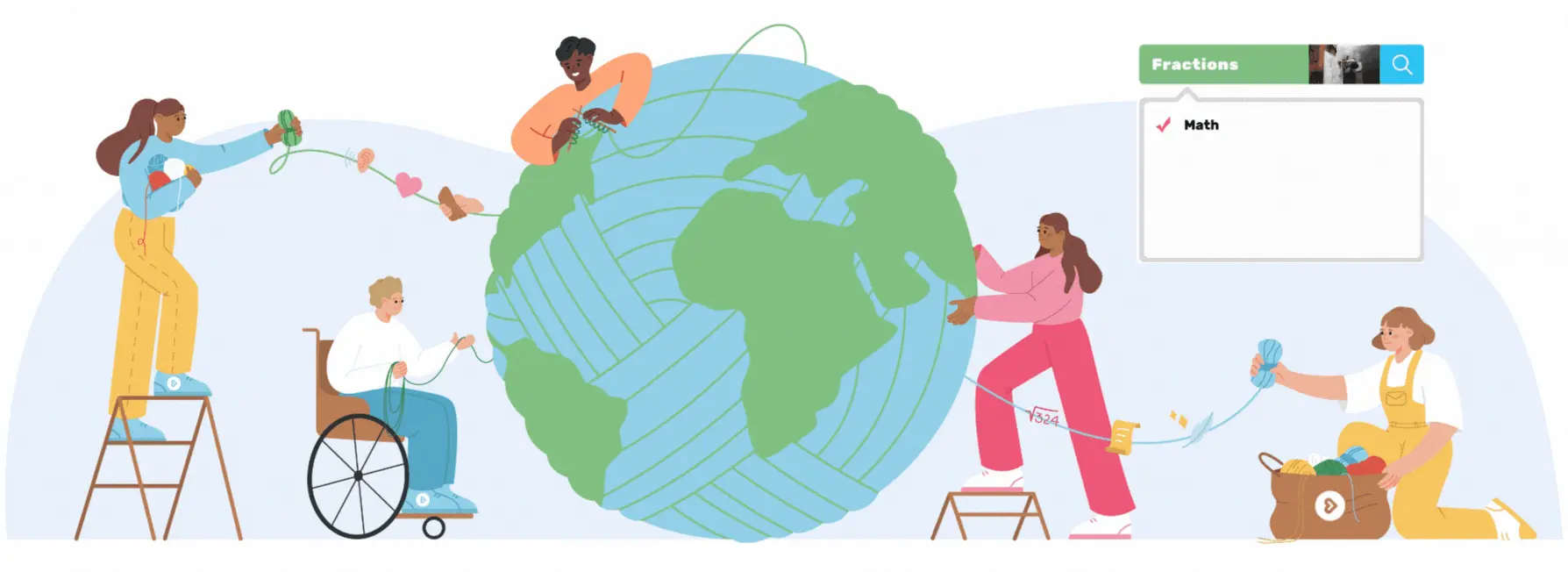

Let’s open our hearts and minds together. In complex classroom conversations, home learning conversations, virtual learning discussions, and more.
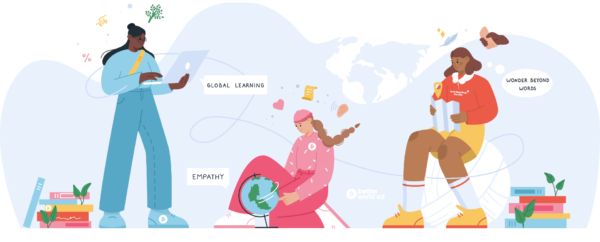

An extra note from abhi to build on the above a bit:
This feeling of helping.. of wanting to make an impact in the lives of others. The deep concept is important, though I feel we often get it twisted and tangled a bit. These people have, these people don’t. These people are, these people aren’t. Those people have less, so I should be grateful. Those people have more, so I should strive to be like them.
It’s an “us” and “them” thing that is especially dangerous because the conversation is so often about material resources, and also so often becomes rather dehumanizing and/or objectifying. It becomes easy to slip into seeing humans as numbers or objects and relating that to our perception of one’s happiness — counting how many people have X amount of Y — rather than really deeply remembering we are all living, complex, interconnected beings who have perspectives and feelings we can wonder about.
The reason Better World Ed exists, possibly above all the many other interwoven reasons, is to help us unravel all of this confusion and come back together as humans during our classroom conversations and beyond. To reweave. To see that we are all so so so deeply interconnected that all this us and them stuff is really rather confusing. That’s not to say there isn’t injustice and inequity that some humans live through and not others.
Because there absolutely is. It’s more to say that it’s somewhat shocking that this kind of injustice and inequity can even exist when we’re so deeply interconnected. It’s shocking and confusing to me that we’ve lost our human connection with one another, and that we aren’t consistently practicing empathy and understanding. Personally, I believe this could be the root of all of these challenges we face in our world (which is why I’m a part of this movement).
The point of realizing this deep interconnection is for us to remember it’s not about saving one another or helping one another with our spare cash or a few hours. That’s great, too. Though it’s actions at the surface, and what we really need to work on together is the whole iceberg. The deeper purpose of this curriculum is about each of our whole icebergs. Learning to see one another (and ourselves) as full, complex, beautiful humans. Not objects. Not numbers. Not statistics to save or change or help.
To see one another as humans, with all of the complexity and magic that brings. The purpose of this curriculum is to help us introspect and understand our biases and judgments, to work alongside one another to address the inequities of the past and present, and to reweave the beautiful fabric of our communities — a fabric so strong that the change we make actually lasts. Because we see each other as full icebergs. I mean, humans.
If this is all confusing (I wrote this in a flow in one go, and plan to edit it more sometime), it’s summed up rather beautifully by Lilla Watson in a quote above. And by Desmond Tutu when speaking about ubuntu above. And in The Anatomy of Peace (a magical book with a link above). And in our humanity & belonging unit.
Basically, this extra note here is all to suggest: let’s be aware of bias and our current wiring (our own and our students’) when engaging in stories about the lives of other complex, incredible humans and in stories about our world and cultures. That kind of awareness is a constant, daily, hourly thing that we’ve got to practice in our classroom conversations and beyond, and it’s something I’m striving to practice every day. It’s hard. And there are no shortcuts. This curriculum is about that hard work, though.
Better World Ed doesn’t exist to help learners “help people” or “fix problems” — this curriculum is here to help us all understand ourselves, each other, and our world in a deeper way in every single classroom conversation and at home. To see that those three concepts are potentially all just one (ourselves, each other, and our world). To see we’re all deeply interconnected, and that this quest for understanding is a lifelong journey that will help us see how we can come together to live the change we dream of. As WE.
Oh, and if you haven’t seen the talk below, it’s such a critical complex classroom conversation to engage in:
